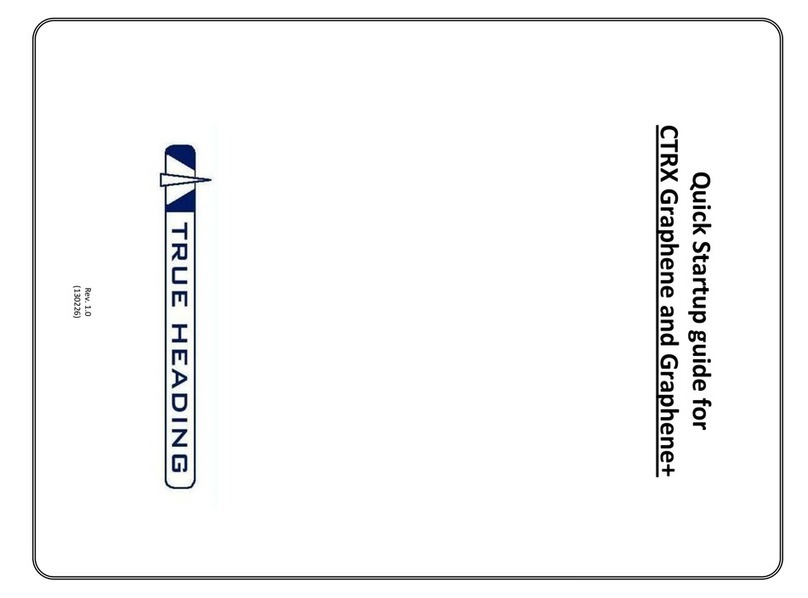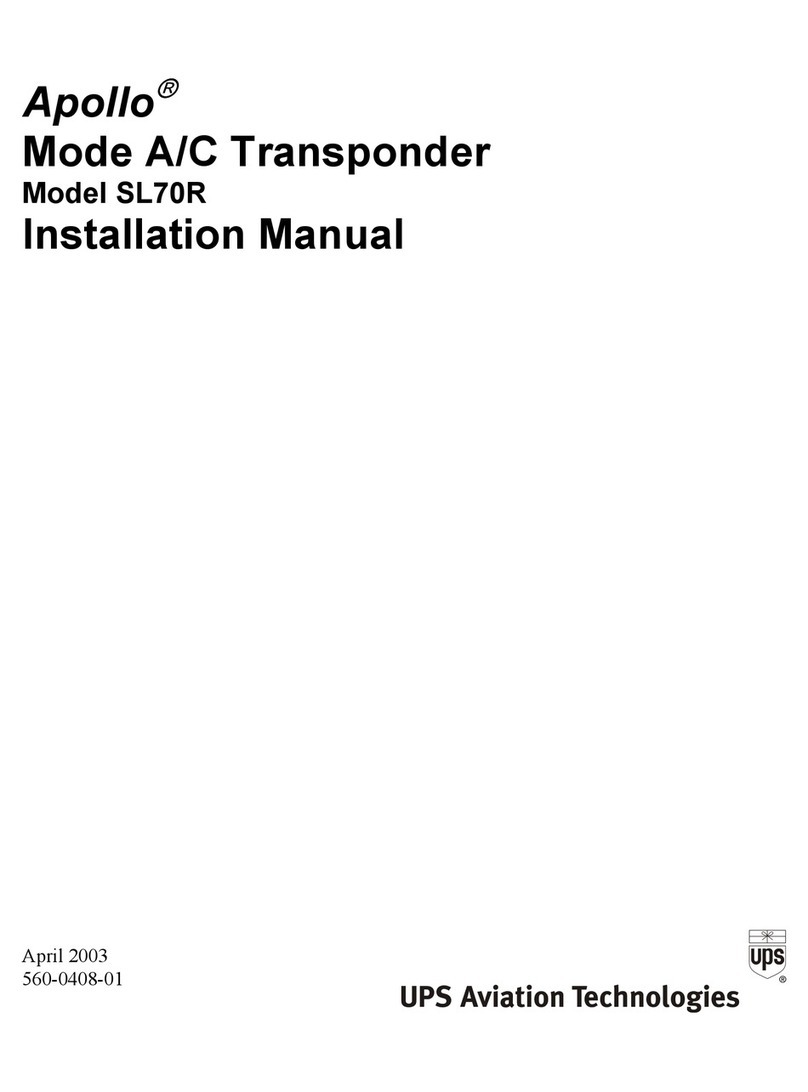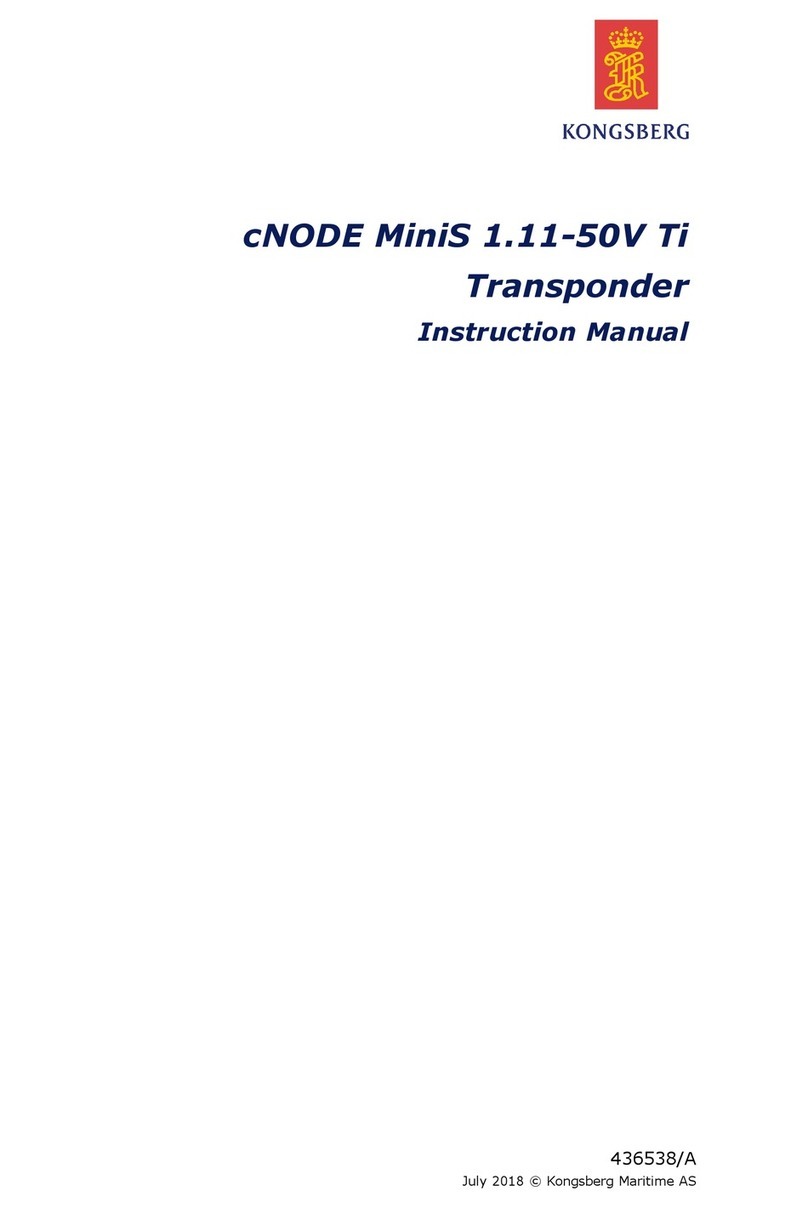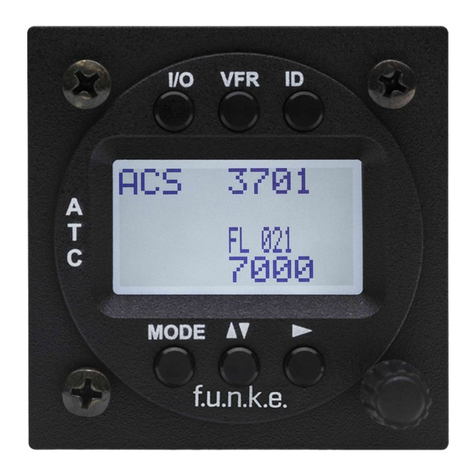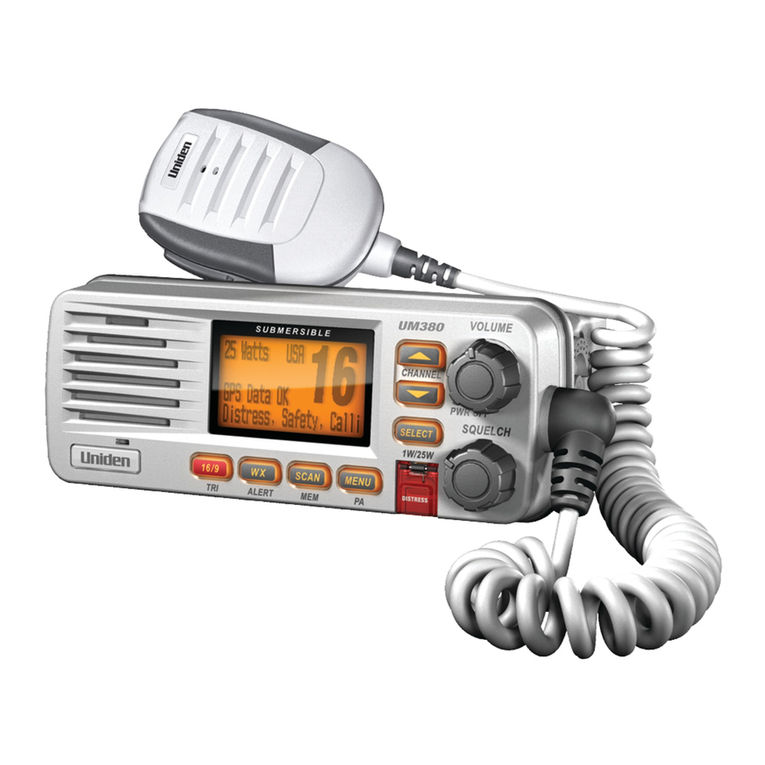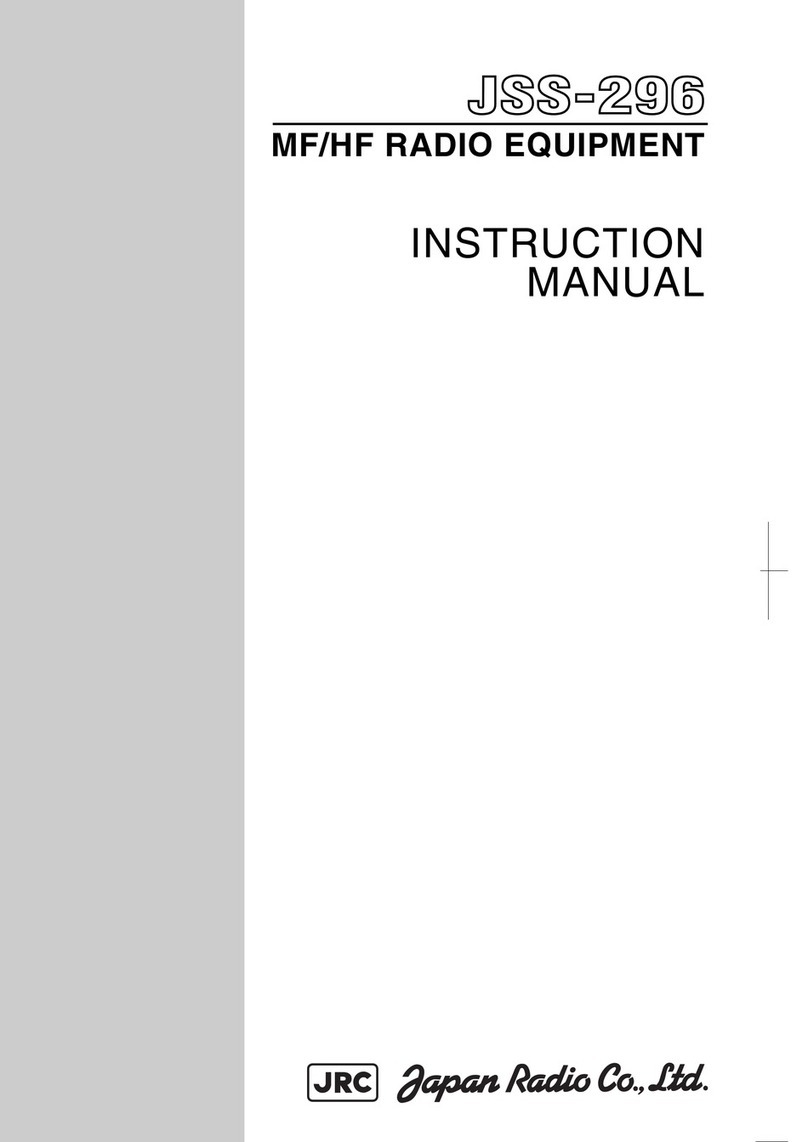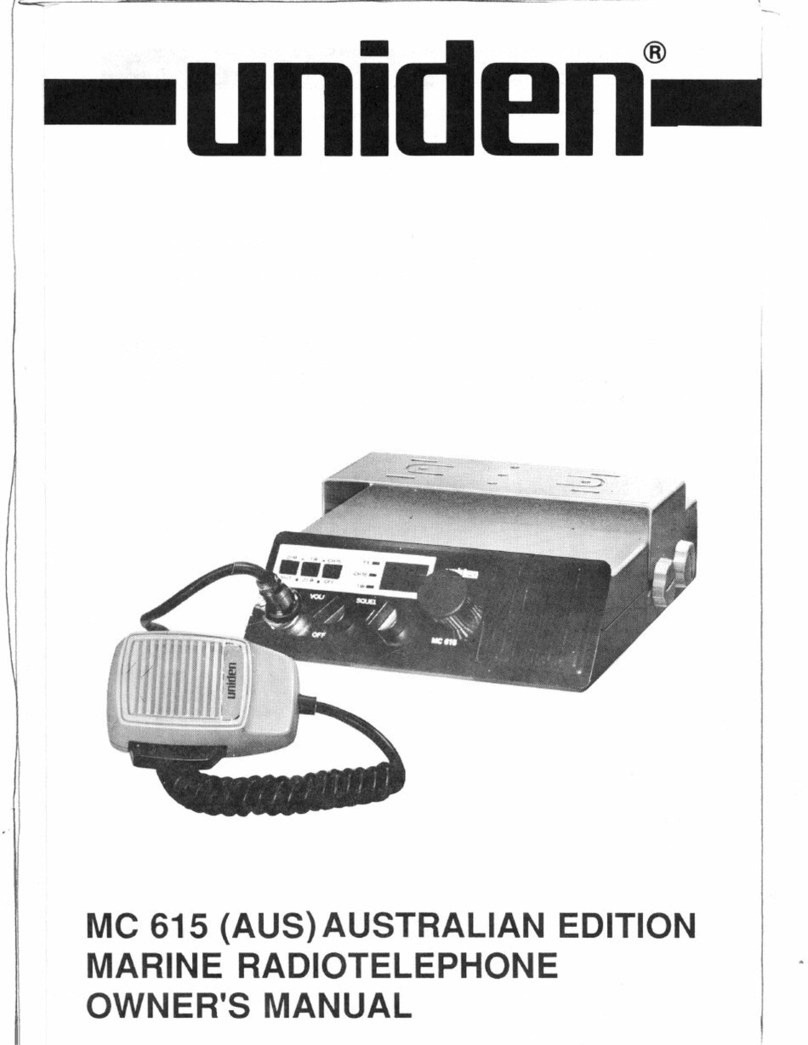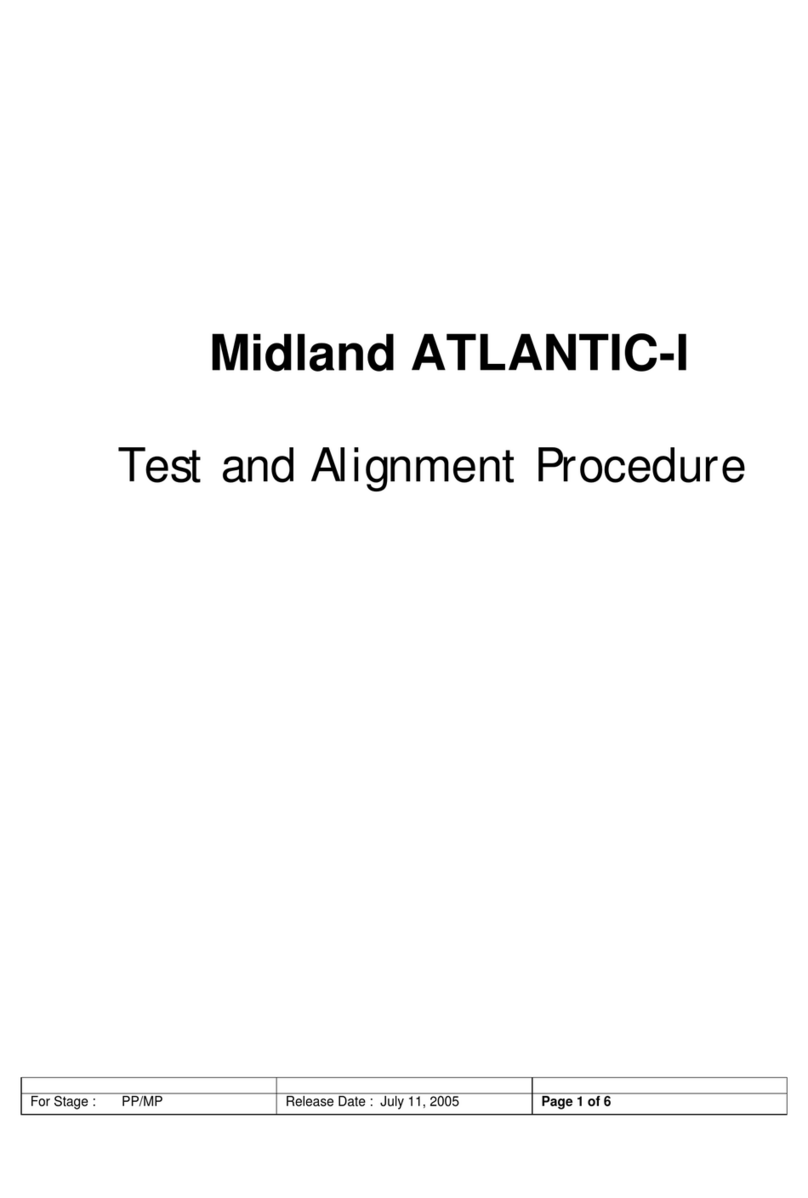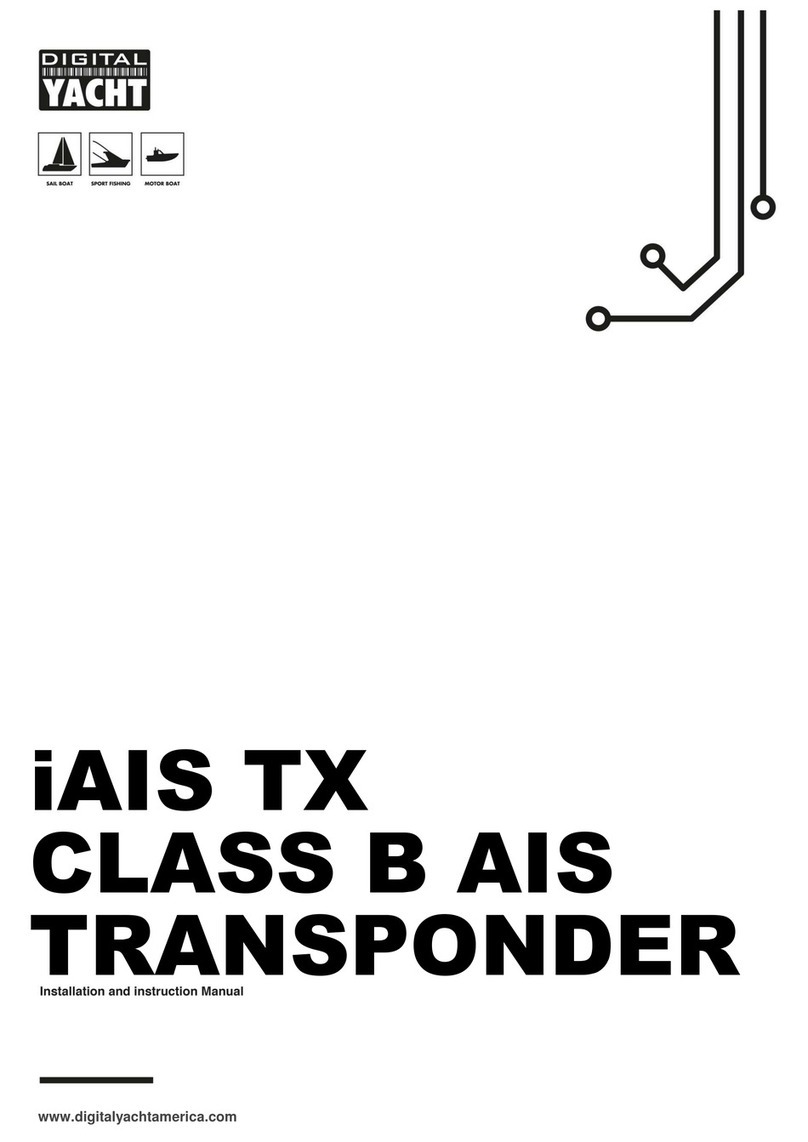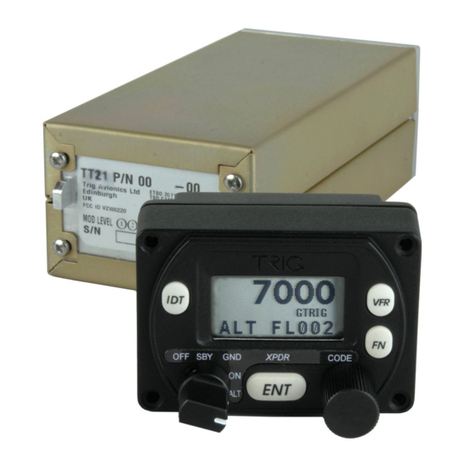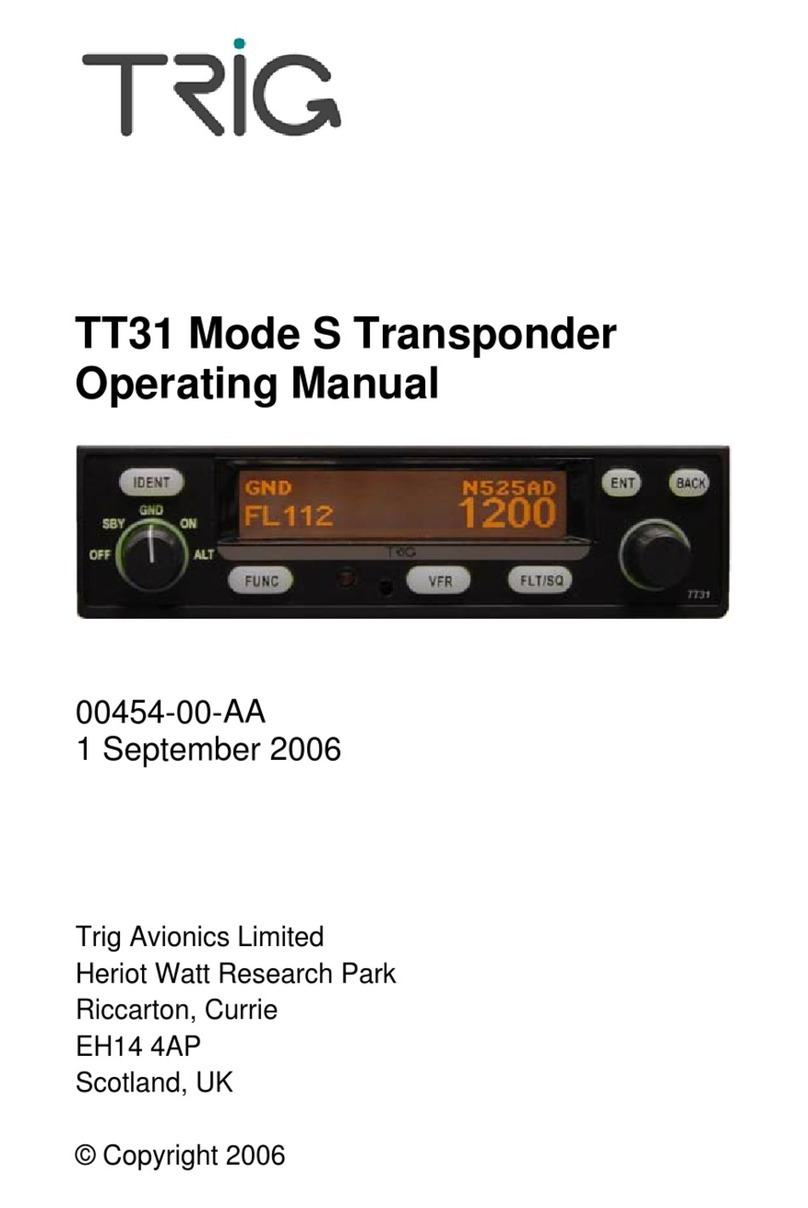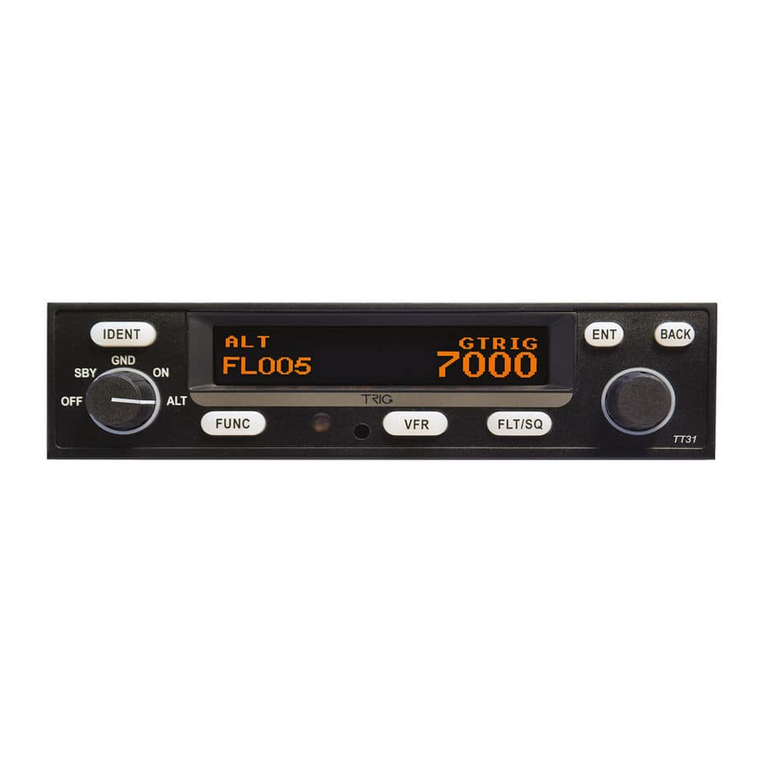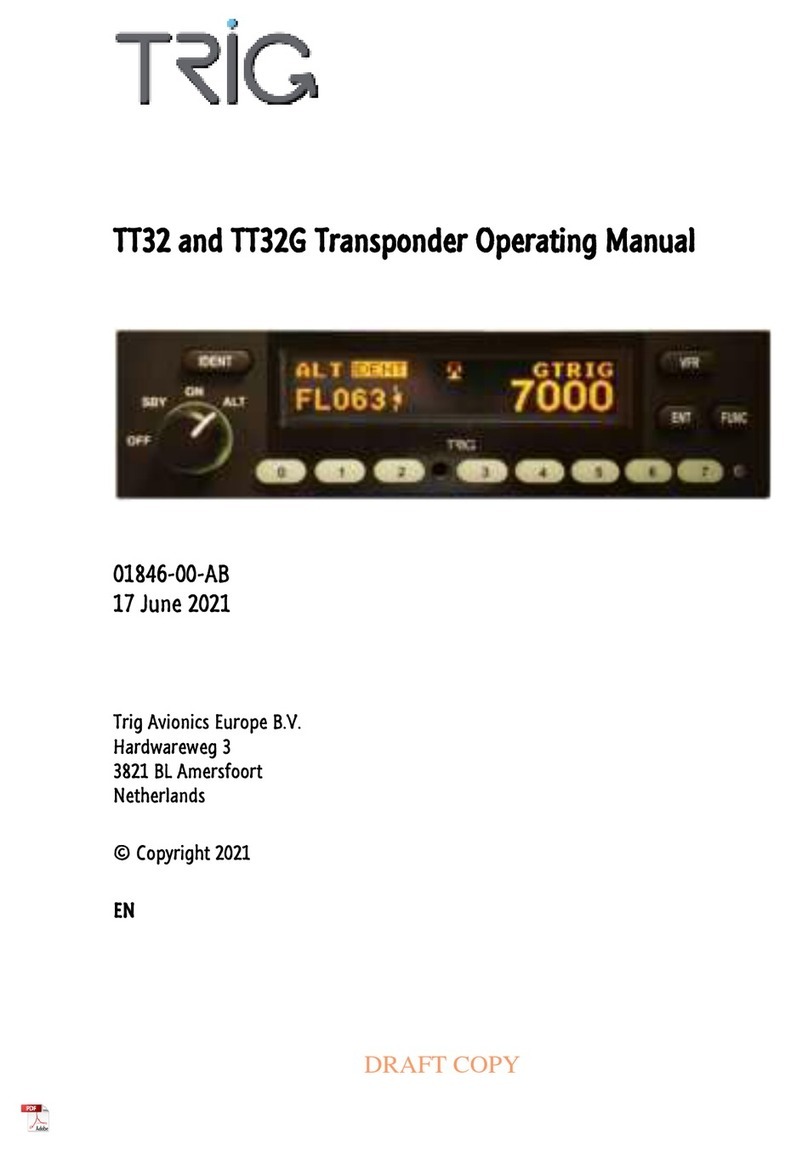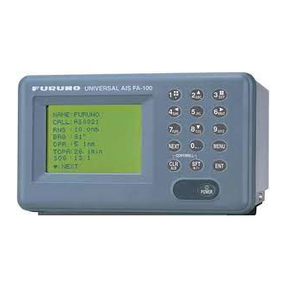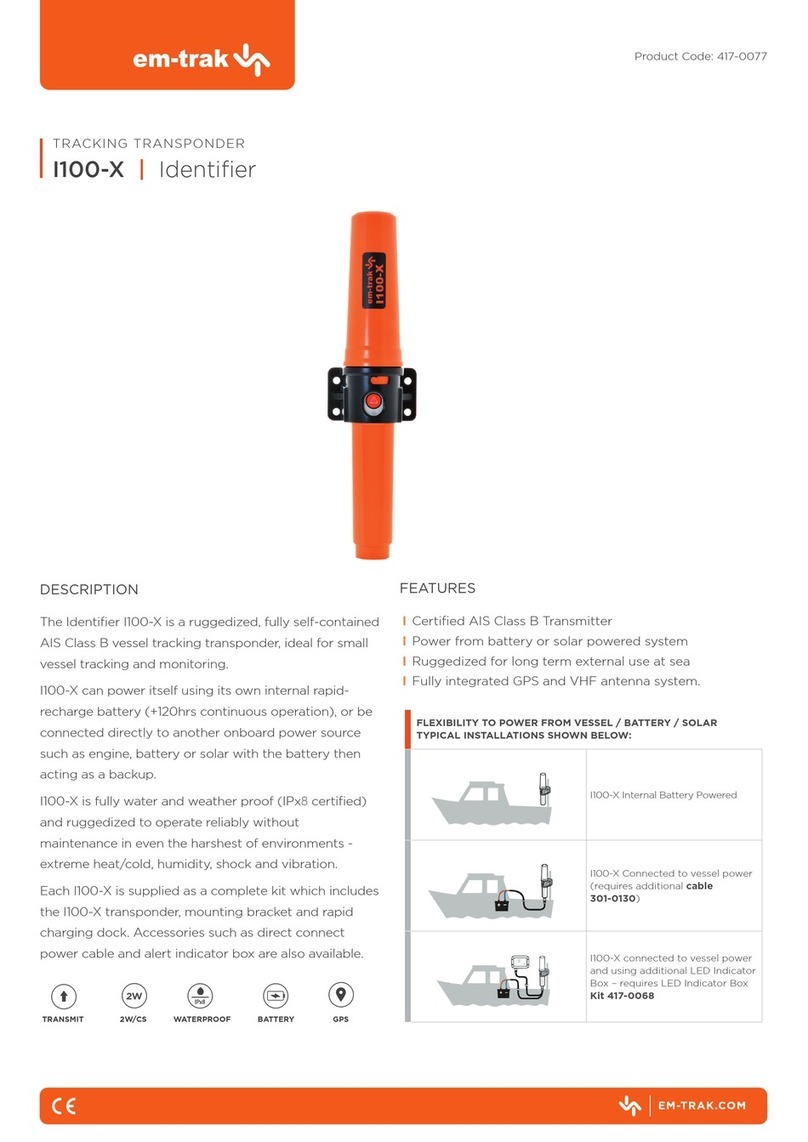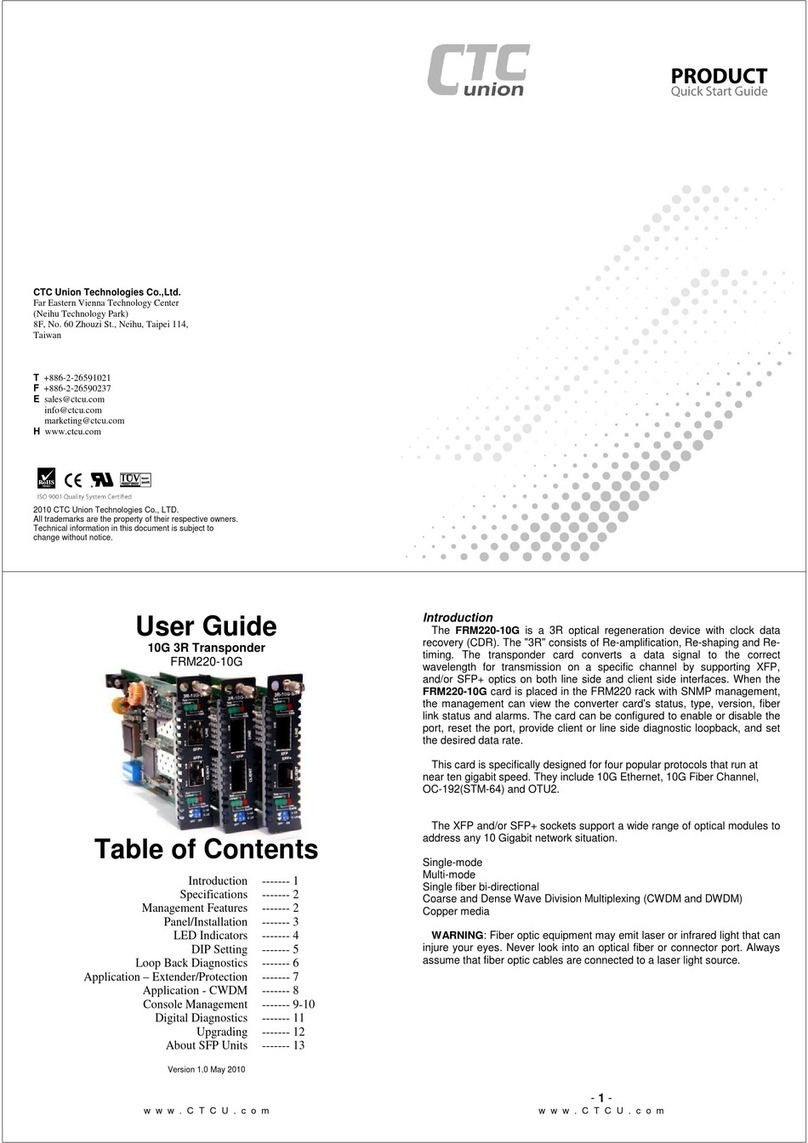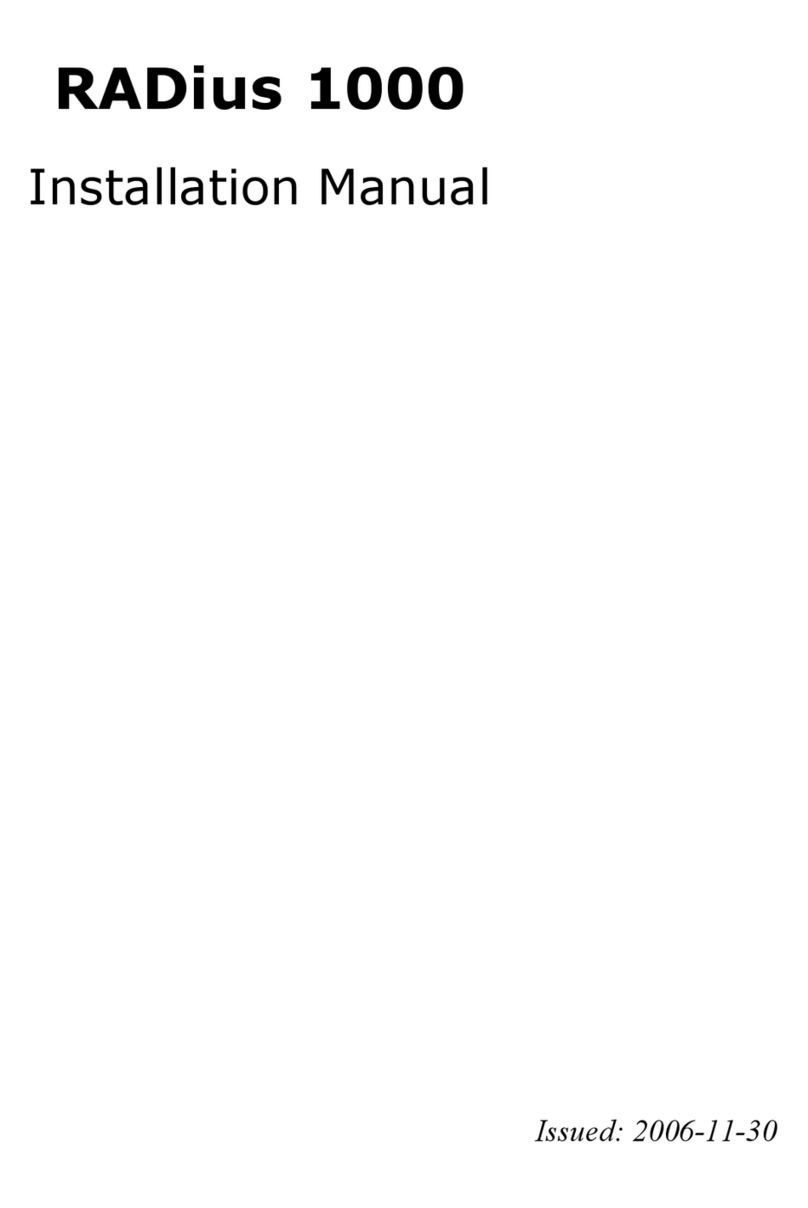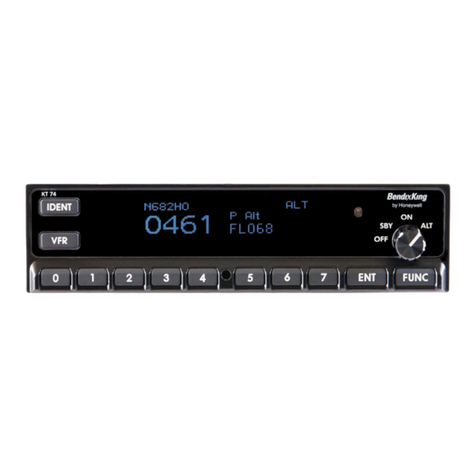
TT21/TT22 Transponder Installation Manual 22 August 2017
00560-00 Issue AP
______________________
Trig Avionics Limited 3
2. Introduction
2.1 TT21/TT22 Description
The TT21/TT22 Mode S transponder system is an ED-73C compliant Mode S
level 2els datalink transponder, with support for ADS-B extended squitter,
elementary surveillance and SI codes, which also meets the relevant
environmental requirements of ED-14F. The TT21 has a nominal power
output of 125 Watts, and meets the power output requirements for Class 2.
The TT22 has a nominal power output of 250 watts, and meets the power
output requirements for Class 1. The ADS-B function meets DO-260B class
B0 for the TT21 and class B1S for the TT22. The TT21/TT22 is certified to
ETSO 2C112b and ETSO C166a, and to FAA TSO C112c and C166b.
The TT21/TT22 transponder is controlled using a separate front panel
controller, called the TC20. This allows the transponder to be mounted
separately from the instrument panel, and reduces the amount of panel space
taken by the transponder. The TC20 includes an altitude encoder. The TC20
is certified to ETSO 2C112b and ETSO C88a, and to FAA TSO C112c and
TSO C88b.
The TT21/TT22 transponder runs from either 14 volt nominal or 28 volt
nominal DC power supply with no configuration changes required.
The TT21/TT22 transponder responds to both legacy Mode A/C interrogations
and to Mode S interrogations from both ground radar and airborne collision
avoidance systems. In all cases, the interrogations are received by the
transponder on 1030MHz, and replies are transmitted on 1090MHz.
2.2 Interfaces
2.2.1 TT21/TT22 Transponder Unit
The main transponder unit has a single TNC antenna connection and a single
25 way D-type connector. The 25 way D-type interface provides the following
services:





















